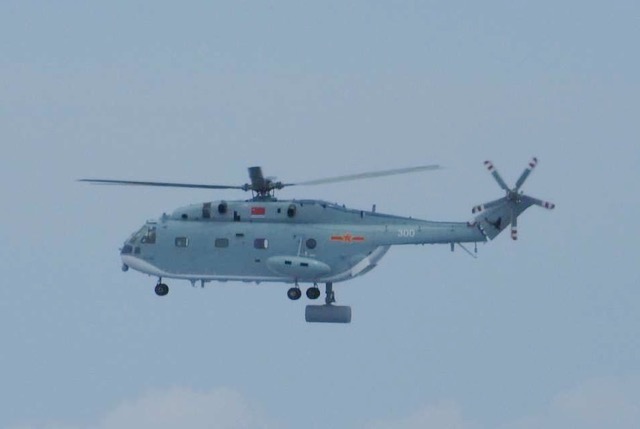Z-18
Summary
| Category | Military Helicopters |
| Origin country | 🇨🇳 China |
| Manufacturer | Changhe |
| First flight | 18 March 2010 |
| Year introduced | 2018 |
| Number produced | 133 units |
Description
The Changhe Z-18, also designated Z-8G, is a medium-lift transport helicopter developed by Changhe Aircraft Industries Corporation (CAIC) as a successor to the Changhe/Harbin Z-8. It is a development of the Avicopter AC313 and Changhe/Harbin Z-8, both of which trace their lineage to the Aérospatiale SA 321 Super Frelon.
The Z-18 incorporates a redesigned lower fuselage similar to the AC313, resulting in increased internal space. This design replaces the Z-8's boat-shaped lower fuselage with a tail ramp enabling the transport of small vehicles. The aircraft utilizes titanium and composites in its rotor blades and rotor system to a greater extent than its predecessors. It features a glass cockpit and is powered by three WZ-6C turboshaft engines. The Z-18 has a maximum takeoff weight of 13.8 tonnes.
The Z-18 transport variants are capable of carrying small vehicles or up to 5 tonnes of cargo to a range of up to 1000 km. Various configurations may include equipment such as nose-mounted weather radar and FLIR/TV turrets, terrain-following radar, SATCOM fairings, flare/chaff launchers, MAWS/RWR/LWR sensors, QJH001 machine guns, and ECM equipment. The Z-18F anti-submarine warfare variant is equipped with a chin-mounted surface search radar, dipping sonar, and can be armed with up to four Yu-7 ASW torpedoes or YJ-9 anti-ship missiles. It can also carry up to 32 sonobuoys. The Z-8L variant is distinguished by a wide-body fuselage and enlarged fuel sponsons, increasing the internal width of the load area to 2.4 meters.
The Z-18 has been in operational use with the People's Liberation Army Ground Force since January 2018, primarily the Z-18A transport variant. The Z-18A conducted high-altitude testing on the Tibetan Plateau in January 2015, achieving an altitude of 9,000 meters during these trials. The Z-18F anti-submarine warfare version was undergoing testing by the end of August 2014, reportedly for service with the People's Liberation Army Naval Air Force.
Main Variants:
-
Z-18: This is a naval transport variant equipped with a folding tail boom and rotor blades, featuring a nose-mounted weather radar and FLIR/TV turret for enhanced operational capabilities.
-
Z-18A / Z-8G: This transport variant, expected to replace the Z-8A/B, is equipped with an extended nose housing a terrain-following radar, and includes multiple subvariants with different equipment configurations such as a SATCOM fairing, flare/chaff launchers, and ECM equipment.
-
Z-8L: A transport variant distinguished by its wide-body fuselage and enlarged fuel sponsons, increasing the internal load area and featuring a nose-mounted terrain-following radar, along with various equipment configurations.
-
Z-18F: The ASW variant is outfitted with a chin-mounted surface search radar and dipping sonar, and can carry up to four lightweight torpedoes and 32 sonobuoys for anti-submarine warfare missions.
-
Z-18J: This AEW variant replaces the rear ramp with a lowerable radar antenna, providing airborne early warning capabilities with a radar range of 320 km.
Technical specifications
| Version: Z-18 White Heron | |
|---|---|
| Maximum speed | 336 km/h (209 mph) |
| Height | 6.7 m (21.9 ft) |
| Length | 23.0 m (75.6 ft) |
| Service ceiling | 9,000 m (29,528 ft) |
| Empty weight | 6,865 kg (15,135 lbs) |
| Max. takeoff weight | 13,800 kg (30,424 lbs) |
| Powerplant | 3 x turboprops Changzhou WZ-6C delivering 1300 kW each |
Current operating countries
| Country | Units | ||
|---|---|---|---|

|
China | 133 | |
All operators
